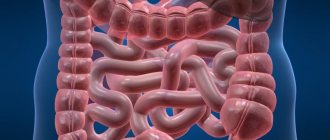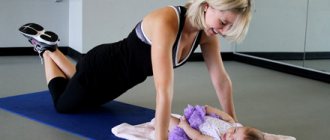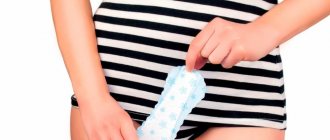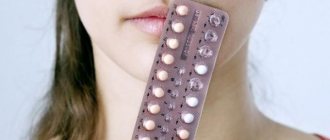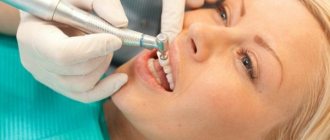Due to a sharp change in hormonal levels after childbirth, small hairs on the skin begin to grow much more actively. Only time will help the skin return to its normal state, but a young mother always wants to be beautiful and well-groomed. Therefore, many women are beginning to become interested in radical methods of removing unnecessary hairs on the skin of the legs or in the intimate area, including laser. Is it possible to have laser hair removal while breastfeeding? How safe is the procedure and how does it work?
Every woman wants to be beautiful and self-confident, and laser hair removal is an assistant in this, even during the period of guards.
Brief description of the procedure
This is a cosmetic manipulation that can only be performed using special equipment (laser) and the hands of trained cosmetologists. Its essence lies in the destructive effect of the beam. The light beam lightens the hair pigment and disrupts its structure. As a result, it dies along with the root and does not appear on the body for a long time. The effect can last for several years.
The procedure is carried out in several stages. This is done so that all, even the shortest hairs that were previously hidden under the skin, come under the influence of the beam. Why does hair die: ultraviolet radiation reaches the surface. Due to the melanin contained in the hair, they absorb it and burn from the inside along with the root. Laser hair removal during breastfeeding has some contraindications, but according to research, the procedure is safe and will not cause harm to the young mother and baby.
Possible consequences after hair removal
Possible side effects of laser hair removal include [4]:
- erythema and perifollicular edema;
- formation of crusts and vesicles (bubbles) at the treatment site;
- hypo- or hyperpigmentation.
Most of these phenomena are usually temporary. It is believed that hair follicles are more sensitive to treatment when they are in the growth phase, but conflicting results have been reported regarding the sensitivity of hair to treatment in this phase. There is also no consensus regarding the most favorable places for this procedure [4]. In addition, the presence of keloids or hypertrophic scars in a woman may preclude the use of laser hair removal [6].
Why might it be dangerous?
Of all the methods of long-term removal of body hair, this procedure is the safest. Why laser hair removal can be performed during breastfeeding, pregnancy and before childbirth: it does not affect the chemical composition of milk in any way and will not harm the baby. But there are unpleasant consequences that can affect women.

Shifts in hormonal levels can disrupt the production of melanin in the skin. This manifests itself in the form of local pigmentation, the appearance of new moles, and papillomas. It is not known exactly how the skin will behave when exposed to a laser. There is a risk of aggravating already unpleasant changes or hair removal causes a burn.
For what diseases is it contraindicated:
- for diabetes mellitus;
- oncology;
- exacerbation of herpes;
- severe infections;
- autoimmune diseases;
- mental disorders.
After childbirth, some women are prescribed hormonal medications to normalize the body's condition. In this case, laser hair removal during lactation cannot be performed without prior consultation with your doctor.
Many young mothers experience varicose veins. Under the influence of a laser, this problem may worsen. After a caesarean section, a scar remains, which will last for several more months, and will finally heal only after two years.

Laser hair removal in the bikini area cannot be done during this period until the scar is covered with a dense layer. The same goes for those who have had an episiotomy. It is recommended to remove excess vegetation from the deep bikini area mechanically with extreme caution until the scar heals. If a woman is prone to atopic dermatitis, the disease may worsen during hormonal overloads. In the presence of inflammation, open wounds and rashes, laser hair removal is not safe during lactation and cannot be performed on any areas.
What harm can laser hair removal cause during breastfeeding?
Doctors and cosmetologists say that no harmful substances pass into breast milk.
The manipulation will not bring any unpleasant consequences to the child or his health. However, there is a possibility of harm to the woman’s health. At any stage of pregnancy and throughout the entire period of natural feeding, you must consult a doctor before signing up for it. Along with hormonal changes in the body, the production of melanin is disrupted, which is also suppressed during hair removal.
Dermatologists warn that it is impossible to predict what kind of skin reaction may occur. Pigment spots, papillomas, and moles may appear in large quantities.
How to prepare
Preparation during lactation takes place in several stages:
- A month before the procedure, it is recommended to avoid direct sunlight and not visit the solarium.
- For 1-1.5 months, do not depilate or pull out hair using tweezers or an epilator.
- The maximum length should be 2-3 mm; it is recommended to shave the hair 3 days before laser hair removal.
- It is better to avoid medications that affect skin sensitivity the day before the procedure.
- The skin should be sufficiently moisturized; to do this, you must stop cleansing with alcohol-based products a week before the procedure. Stop using cosmetics in the laser affected area within 24 hours.
- After removing hair follicles using a laser, do not expose this area to sunlight, use sunscreen.
- Upon completion of the procedure, the skin must be moisturized using special cosmetics that moisturize and protect against irritation.

It is recommended to avoid stress while breastfeeding. If the laser hair removal procedure is disturbing, then it is better to postpone it and choose a more acceptable method (shaving, creams). Lactation is not a reason to give up beauty treatments; choosing a competent specialist and suitable equipment will help solve the problem of unwanted hair quickly and effectively.
What is the essence of the method
Whether a method is safe for breastfeeding or not can only be understood by fully understanding it. Laser hair removal is carried out not at home, but in a salon, since hair removal requires special equipment. The procedure, carried out at home without special skills, is considered potentially dangerous to women's health.
Hair is removed after direct action of the laser beam on the hair follicles. Hair contains melanin, which absorbs energy and heats up. High temperatures destroy blood vessels, causing hair follicles to stop receiving the necessary nutrition and die. It is believed that carrying out such a procedure only a few times completely stops hair growth, and repeated hair removal may be required only after a couple of years.
Advantages of the method
Laser hair removal is a fairly popular procedure for most women, which has a number of positive features:
- the problem of ingrown hairs disappears;
- there are no scars, cuts or wounds after the session;
- the result is long-lasting. Some women apply for repeat testing only after 4 years, it all depends on the individual characteristics of the body;
- no painful sensations. Modern equipment for this method of hair removal has a cooling system, so pain is not felt when removing hairs. In this case, anesthesia is almost never used;
- high efficiency is observed: all hairs are amenable to laser beams, no matter how thick or thick they are.
Alternatives
If there are problems that are included in the list of contraindications, nursing mothers can use other hair removal products:
- razor;
- sugaring;
- waxing;
- depilatory creams;
- epilator
All these means are less effective than laser, but they also help get rid of vegetation, albeit temporarily.
Laser treatment is carried out only after consulting a therapist, using good equipment and by the hands of a specialist with positive experience. The hardware method does not have any negative impact on the issue of milk production and quality.
Rules for preparing for hair removal
For diode hair removal you do not need to have regrown hair. You can shave the day before or on the day of hair removal. Neodymium requires a 2-3 mm hair length. To do this, you need to shave them 2 days before the session. Please note that only shaving is allowed.
Doctors do not recommend sunbathing for at least a week before the procedure. If you are taking photosensitizing drugs, you should stop taking them for a while.
Do not perform any cosmetic procedures that damage the skin or compromise its integrity. For questions regarding any procedure, please consult with a cosmetologist in advance.
Do not irritate your skin with scrubs and peels on the eve of the session.
Alternative Hair Removal Methods
If for some reason laser hair removal during lactation is not possible, then you can use the following alternative hair removal methods:
- Wax strips. Can only be used with regular use.
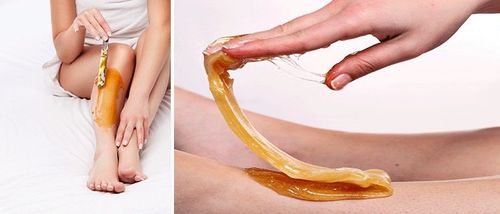
- Shaving. The simplest method of depilation, which does not cause pain and does not affect milk production.
- Using an epilator. Recommended for women with a high pain threshold, as severe pain can cause loss of milk.
- Using depilatory creams. Use only in the absence of an allergic reaction.
The choice of hair removal method during lactation is up to the woman, but doctors recommend giving preference to regular shaving.
Benefits of a cosmetic procedure
A beautiful bikini and smooth skin are the dreams of every woman, regardless of the time of year or age category. Today, more and more women are choosing this method of dealing with hair, as it has many advantages over other known methods.
Advantages:
- Hair does not grow in.
- The rays do not leave any marks on the skin - redness, pustules, scratches, scars.
- Duration of storage of the obtained results. This indicator directly depends on the characteristics and characteristics of the skin. On average, the effect lasts from 3.5 to 5 years.
- No discomfort or pain during the procedure. It is worth noting that local anesthesia is not used, and pain relief is achieved by cooling the skin at the site of laser exposure.
Efficiency:
Epilation allows you to remove all hairs, regardless of their color, thickness, thickness, or rate of growth.
To remove all hairs without exception, it is necessary to undergo at least 5-7 sessions, depending on the characteristics of the skin.
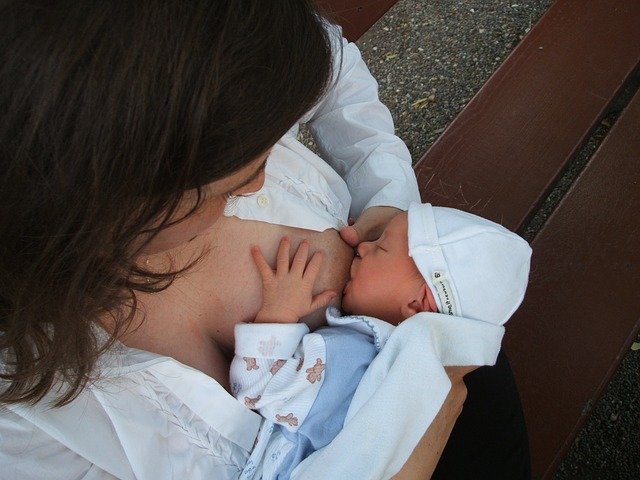
Precautionary measures
Laser hair removal is a hardware method for which you need to prepare, especially during lactation. To avoid unpleasant consequences, the following precautions must be taken:
- a month before the procedure, avoid exposure to sunlight and visits to the solarium;
- for 4-6 weeks before hair removal, you should not bleach the skin, pluck hairs or wax;
- the maximum length of hairs should be 2 mm, so very long hairs should be gotten rid of 3-4 days before the procedure;
- one day before you need to stop taking medications that increase photosensitivity;
- within a week you should stop using alcohol-based cosmetics, and within 24 hours you should stop using any cosmetics at all;
- After epilation, the skin should be protected from sun exposure by applying sunscreen if necessary;
- After the procedure, you need to moisturize the skin and apply aloe vera gel to help relieve irritation and redness.
Laser hair removal while breastfeeding is not prohibited, but it is very important to choose a good specialist who works with high-quality equipment and follow all his recommendations.

